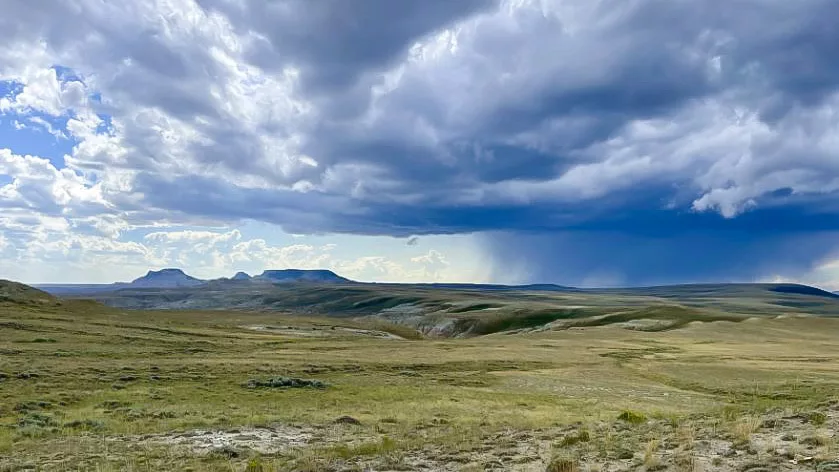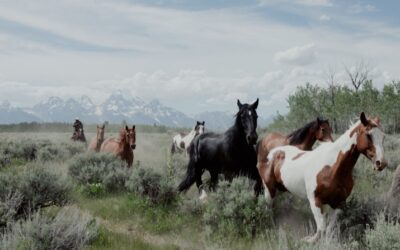This story comes through a content-sharing partnership with Wyoming Public Media.
It was the wettest summer on record for Wyoming — at least since meteorologists began keeping track in 1895.
And experts say this year’s moisture had huge short-term impacts on the drought that began in 2020.
“It was indeed the wettest summer on record, June through August,” said Michael Natoli, a meteorologist at the National Weather Service (NWS) in Cheyenne.
Free from the 2020 drought
Natoli said it wasn’t necessarily the wettest summer on record for every single town and city, but it was for the state as a whole.
He said at the start of summer over half of the state was “abnormally dry” and about 30 percent of the state was in “drought.”
“By August 22 of this year, we were completely drought free across the state,” Natoli said.
Notably, in the last few weeks a small portion of eastern Sweetwater County and western Carbon County re-entered a state of being “abnormally dry” — which accounts for over two percent of the state. But, this time last year about 40 percent of the state was “abnormally dry” and about half of the state was in drought.
Natoli said the short term impacts of such a wet summer are huge. Landscapes that are normally brown by early July stayed green through mid-August. Also, there were hardly any wildfires.
“We’re not completely out of the woods yet, but so far things have been a little quieter than what we’ve kind of gotten used to after the last three years were very dry,” he said.
But there’s still a megadrought
Natoli said this relief is separate from the 23-year “megadrought” that has plagued the West.
“In terms of canceling out the losses of the last 20 years, we unfortunately did not even get close,” he said.
While the snowy winter and wet summer helped, the impacts from the megadrought are far from resolved. Just last year, water reservoirs in western states were being drained at alarming rates. That didn’t happen this year due to the snowy winter and wet summer, but is expected in the years to come. Western states are currently trying to figure out the best way to address the impending water scarcities.
What could help reverse some of the long term drought impacts are more snowy winters. Natoli said it’s really hard to predict what this winter will bring for Wyoming, but we’re in an El Niño year, which sometimes means warmer temperatures and less snow.
“We tend to see fewer storms moving across the northern United States, so that can impact more in the northwest part of the state,” he said, referring to the area that includes Jackson. “Most of the state and particularly the northwest part of the state tend to see less precipitation than normal, less snowfall in the mountains during El Nino and a little bit warmer temperatures.”
But, Natoli said it’s a loose forecast that could easily change — predicting weather several months out is really tricky.





